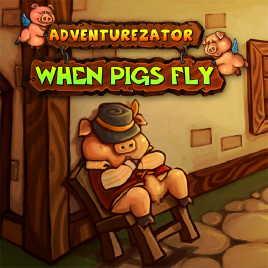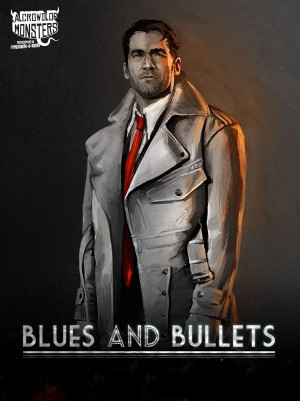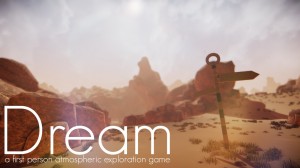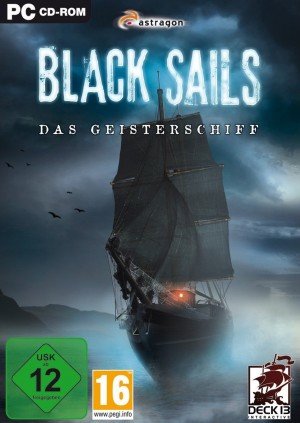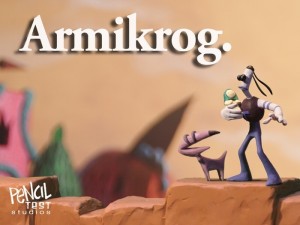Review for Adventurezator: When Pigs Fly
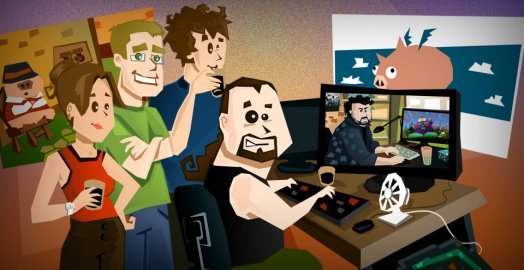
Adventurezator: When Pigs Fly is a curious beast, more unusual even than its stars Edmund the pig man and Zookwinkle the living garden gnome. It bills itself, rather grandly, as an "emergent adventure game about creating emergent adventure games!" But what does that mean exactly? Setting aside a few brief Matrix-y references (are we all just characters in somebody else's adventure game?) what we have here is either a game creator bundled with a demo game, or an adventure game bundled with a level editor. It's hard to tell which, as the game sits somewhere between a simple tech demo and a full adventure experience. Likewise, the creator is more flexible than your usual level editor, but lacks some crucial features that would allow it to become a general-purpose game maker. Together they have heart in abundance, and despite no longer being in Steam Early Access it is still in active development, but right now it's a very mixed bag with flashes of magic.
Before we dive into the game maker, let's get back to Edmund and Zookwinkle. The unlikely duo at the heart of When Pigs Fly live in a land full of fairy tales, and what would any good fairy tale be without a curse or two? Edmund used to be a man, until he ran into a rather grumpy local wizard and got turned into a pig in a fit of pique. As for Zookwinkle, he and the rest of the once-proud gnome race have also been cursed, turning to stone in the light – all those gnomes you see in peoples' gardens secretly come to life at night. (If that brings to mind Doctor Who’s the Weeping Angels, it's meant to. The Angels themselves make a cameo appearance later in the game.) Both Edmund and Zookwinkle want their curses lifted, so naturally they team up and set off to find a Potion of Uncurse. Along the way they run into Isaac Newton (yes, really) and manage to distract him from gravity and apples long enough to recruit him as the team alchemist. The three of them then venture forth into their fairy tale world, and before long they find themselves dealing with the three bears, curing a city's rat infestation with a certain wind instrument, and sneaking into dwarvish mines.
It all adds up to a surprisingly substantial adventure (around 5-7 hours in my case), with a sunny, light-hearted atmosphere and plenty to do, especially when you consider that there are multiple paths to explore and several optional areas. It isn't laugh-out-loud funny (although a narrator chips in at times with some dryly comic lines), but it's hard not to feel for Edmund and Zookwinkle as they try to stay positive in the face of adversity. They often have to work together to solve puzzles, switching control back and forth as you go, which helps to foster a sense of teamwork between them.
The graphics are charming and attractive, especially considering the small development team. They're fully 3D, with a cartoonish cel-shaded look to them that fits the feel of the game perfectly. Edmund and Zookwinkle's world is classic high-fantasy medieval, full of stone castles, wooden peasant hovels and acres of woodland, all drawn in a simplified and brightly-coloured but otherwise fairly realistic style. The woodland stands out as more stylised, all geometric shapes and slabs of colour, but it still manages to fit in with the overall Saturday morning cartoon aesthetic.
You look down on the world from an oblique angle, with each distinct area presented as one continuous environment. The rooves of buildings you can enter are invisible, as are any walls that would get in the way of the cursor (fading out as necessary to show you what's behind them). Movement is handled strictly using the mouse, and you can zoom in and out with the scroll wheel. For a better view of your surroundings, you can freely move the camera around with the WASD keys and rotate it with Q and E. The one thing you can't do (sometimes frustratingly) is shift your viewpoint angle: it's fixed at about 45 degrees. Overall, though, it works well and does a good job of making the area feel like a whole rather than a series of rooms without getting in the way of finding and interacting with objects and characters.
The one minor exception to all this graphic loveliness is Isaac Newton, or rather his face. Unlike all the other characters, it blatantly looks like a mask that has been attached to his real face; it's a smooth curve that sits in front of the rest of his head, with an image of his face (presumably taken from a painting) drawn on it. This, though, is a result of limitations in the character creation system, which we'll discuss later.
The cartoonish feeling is further enhanced by the music, which is a mixture of classics, nursery rhyme tunes and new music created in a similar style. Overall, it's bright and bouncy, though it can turn foreboding or menacing when the occasion calls for it. The voice acting is also pretty good, though it's painfully obvious that pretty much all the characters (apart from some of the women) are voiced by one guy; he even jokes about it at one point. Then again, this did sometimes give me the feeling of being read a bedtime story, with the reader trying to put on voices as best he can as he goes. In context, perhaps that's fitting.
Interactions are mostly standard point-and-click: moving the cursor around will make objects you can interact with glow, and clicking on them brings up a surrounding circular menu of options, such as look at, pick up, or turn on. Your inventory is shown as a column of circles down the right-hand side of the screen, and dragging an item from there onto another object performs an appropriate action, if possible. One frustrating feature, however, is the "look at" command, which by default swings the viewpoint around and zooms in tight on the object or character in question. It also brings up a textual description, interaction options and object properties (more on that later also), but the process of zooming in and out is both slow and disorienting. When you consider that many merely decorative objects can be looked at, providing minimal information and generic descriptions in response, it gets old fast. Fortunately, it’s possible to switch this zoom feature off, partly or completely, through the game settings. Far less fortunately for me, there was no indication of this and I didn’t realize it until I’d played the game through to completion.
Two departures from point-and-click convention deserve mention, one major and one minor. The minor one is that, unlike almost all recent games, you can drop items. You're not required to carry around items forever (or until you use them), and you even get to decide where to drop them. (In fact, this is an important step in some puzzles, like when you have to plant a bomb to destroy the surrounding area.) It's just as well you can drop things, too, as your inventory can only grow so big. In another retro touch, each item has a weight and each character has a maximum weight they can carry. This isn't as frustrating as it sounds, as I only once ran into this limitation and had to drop something to move forward.
The major change is more troublesome: you can combine items, but only in a very slow and convoluted way. As you wander around, you'll discover alchemy recipes and construction blueprints that allow you to make new items. To use an alchemy recipe, you'll need to assemble all the necessary ingredients as well as an alchemy kit, then find an alchemy table to do the actual work. Once at a table, you have to place the active recipe, put all the items on the table, turn the table on and then use the kit on the table to create the potion you want. Finally, you need to interact with the table again to pick up the finished potion. It's a similar story with the blueprints, which allow you to use a workbench or a forge to construct items such as swords and keys. Overall, it's a painful process requiring a lot of clicks to get the job done. I'd have much preferred an approach where you simply gather everything needed and have the combination done automatically; the rest is just busywork.
As an aside, you might think that having the game essentially give you a list of all the item combinations that work would make it easier, but in fact it just changes the nature of the puzzle. It does eliminate the try-everything-with-everything step you sometimes have to resort to (for which I'm grateful), but instead the designers have cunningly included extra blueprints and recipes, with limited supplies of the ingredients. This means you can't just blindly make everything you can, because in making one thing you might run out of supplies to make something else; you have to stop and think about which items will actually be useful. Guess wrong and you’ll have no choice but to restart that section and try again; unlike some RPGs, there’s no option to reverse engineer objects to get your materials back.
For all its clunkiness, one thing Adventurezator does very well is world simulation. In most adventure games, the simulated world is paper-thin; every interesting action you can take has been prepared for ahead of time by the developer. You may have a flaming torch in your hand, but that doesn't mean you can set the house on fire – at least, not unless it furthers the plot. There are a couple of main reasons for this: it avoids the need for any kind of simulated physics, and it keeps the state of the game under control, ensuring the player can't get stuck or wind up anywhere they shouldn't be. You solve puzzles by finding the intended solution, and get rewarded with cutscenes or animations that give the impression you're wandering through a real live world when in fact you're mostly on rails.
Adventurezator takes the opposite approach, doubling down on the simulation aspects of world building and de-emphasising traditional puzzles. Here, if you get hold of a flaming torch you can go nuts, burning anything flammable if you want to. If you really want, you can chop a desk into firewood with your axe, put that firewood under a cooking pot, light it and then cook your dinner. Every interactive object in the game has attributes that tell you, for example, whether it's choppable or flammable and what it will turn into afterwards. This only goes so far – not many objects are flammable, and even wooden houses aren't – but it opens up your options as a player, and encourages you to take a physical, intuitive approach to puzzle solving. It can also leave you stuck at a dead end if you destroy something you need, but if you explore and plan ahead this shouldn’t really be a problem. If you do realise you’re stuck, though, there’s no choice but to restart the section.
Interactions with NPCs are both somewhat familiar and yet different to what you might expect. In some ways, they're quite limited: you can talk to people, but only have one conversation with any given character, and you can give them things, but they won't react. The latter rules out many standard puzzles: you'll never be greeted with, "Hey, Adventurer! I've got that Amulet of Troll Befuddlement, but it's so valuable that I'll only give it to you in return for the long-lost Sacred Widget of Doom." It’s a good thing, too, because if you did you’d be even more disappointed when you eventually staggered back with your widget only to have them stand there like nothing had happened. One thing some characters can do is act as merchants, with a list of wares they're willing to sell (for gold) and another of items they're willing to buy. As such, it's possible to simulate these same fetch quests by selling them the (hypothetical) Sacred Widget for enough gold to buy the (equally made-up) Amulet but, as with the crafting tables, it's an awkward solution to the problem.
Despite all that, supporting characters do have rich inner lives. Time is constantly passing in Adventurezator's worlds, and quickly too (at the rate of about an hour a minute). Characters have routines they follow, needing to be in different places at different times of day (and sometimes having something to do there, such as sleeping or talking to each other) and they'll do their best to find their way there at the appointed hour. It's also possible for them to have several options for a time slot, in which case they'll pick one at random. It's a simple system, but compared to most games (where characters pretty much hang out in one place all the time) it does a great job of providing an illusion of life as you see characters walking around from place to place, not always predictably.
The other thing NPCs can do is fight you if you get on their wrong side. If they're friendly towards you they'll just ignore you, but make an enemy of them and they'll attack you on sight. Fortunately, you can deal with that by either staying out of view or acquiring the weapons and armour you need to fight back. If that's starting to sound awfully RPG-ish, don't worry: there are some roleplaying-like stats involved, but the fighting itself is non-interactive. You simply take it in turns to hit each other until one of you dies. If that happens to be you, you’re not surprisingly sent back to the start of that section, but you do at least get a short cutscene for your pains. If you’re a completist, there’s also an achievement for finding all possible ways to die.
This, unfortunately, was the most frustrating part of the experience for me. One of the reasons I enjoy adventure games is that there isn't usually any time pressure: you can survey the situation and come up with puzzle solutions in your own time. Here, though, you often don’t dare stand in one place too long or an enemy character is liable to come along and attack you. Since you only rarely have access to weapons, this is generally fatal and wipes out your recent progress.
In one of the early sections, for example, you're tasked with raiding the three bears' house. Baby bear is friendly towards you, but his parents are definitely not. You might think that because they're out of the house all day and only come back in the evening to sleep, getting what you need would be easy. With time passing as fast as it does, however, instead of a leisurely afternoon's raiding you get a few minutes and then you have to hightail it out of there and find somewhere to hide. They're heavy sleepers, so you can come back at night and finish the job, but again you may need to run for cover in the morning if you can't get the job done in time.
For some, this will add a pleasant frisson to proceedings, simulating the tension involved in real housebreaking (I assume; I tend to confine my illegal activities to games). For me, though, repeatedly getting caught and killed and having to repeat my actions until I got it right was just plain annoying.
Add to this the fact that Zookwinkle is paralysed by daylight (leaving you to fast forward time until night falls before he can move again) and the passage of time in this game feels like a very mixed blessing. Fortunately, you're usually playing Edmund when there are enemies about: being stuck rooted to the spot while enemies approached would have really put the tin lid on things.
Another curious aspect of the Adventurezator world is the way your progress is divided into sections, spread over what it calls a campaign. Each chunk of the game is a self-contained level, with its own goals to define completion. Completing one level unlocks the next, and although you generally start a new level with some of the same items you had when you finished the previous one, each level is independent of the others. There are no explicit save slots, but it’s possible to quick save/load during a level using F11/F12, another feature not properly highlighted unless you go digging. Other than that, all that persists are the levels you've unlocked. In that sense, it's taking a leaf out of the book of platformers, which often work this way.
That's not to say progress is linear: levels often have several possible goals, which unlock different levels on completion and send you off down different paths through the game. It's also possible to jump into any level you've unlocked at any time via an overview campaign map, meaning you can go back and try different options if you want to.
So how are things if you leave Edmund and Zookwinkle behind and try your hand at making your own game? As is hopefully clear by now, Adventurezator's systems have both significant strengths and frustrating weaknesses, at least from the point of view of building a traditional point-and-click game. If you can live with that, the game building tools are great.
The location designer is a joy to use: simply pick the features you want to add (walls, furniture, trees, characters) and drop them into the scene. Click and drag to form walls or pave floors, then stick in windows, tables, beds and what-have-you. The fixed camera angle that can make the game mode frustrating at times isn't an issue here as you can also select a top-down view, ideal for the early stages of laying out buildings and making sure the rooms connect the way you want. Items are handily categorised, and the whole process really couldn't be simpler.
The only fly in the ointment is that the range of options is pretty limited. Essentially, you're picking from items that have already been used in the main game somewhere, meaning you can include (for example) a piggy fountain or a weeping angel, but nothing that wouldn't have a place in such a fantasy setting. No sci-fi spaceships for you! Also, all the pseudo-physics outlined earlier (such as chopping a table into firewood) is hard-coded into the objects themselves. On the one hand, this makes things straightforward and workable, but on the other it means you can't come up with anything outside the existing system. For example, you can set fire to some things (because that's designed in) but not transform them with a magic wand. Likewise, the crafting system is interesting as far as it goes, but it only goes so far. There's a fixed list of magic potions, and you can design your own recipes for them, but there's no way to create new ones with different effects.
Likewise for NPCs, the ones you get look good but the customisation options are limited; fewer than you'd find in, say, an MMO character creation screen. You can use any image as a mask, but (as with poor Isaac Newton) these look pretty clumsy. The behaviour system is interesting, and you can set up different conversations for each pair of characters, not just between NPCs and the protagonists, but it's frustrating not to be able to include any reactions to events.
This is particularly annoying as, unlike with the items, there's no reason it couldn't have been included. Expanding the range of available items would take work that only the developer can do, building and texturing the item models and implementing suitable interactions for them. Implementing a character reaction system, on the other hand, would only need something like a table listing conditions that need to be satisfied and actions to be taken when they are. This already exists in the context of setting victory conditions for each level, so there's no reason it couldn't be adapted and extended here. It would take some extra work, yes, but not nearly as much and would greatly expand the range of puzzles possible.
Music is added by picking a list for your level from the selections provided, with the songs playing randomly. Some of the tracks are designed to loop seamlessly, so it's also possible to pick just one of those tunes and get a continuous soundtrack. You can even add your own voice work if you want.
Finally, there's a simple cutscene creator, allowing you to add background and foreground elements, move them around according to a timeline and add speech. Characters don't animate so much as slide and rotate, but you can include your own images and it's all pretty intuitive.
The bottom line is that everything is intuitive to use and it's easy to jump in and see quick results, but anybody looking to make a more traditional adventure game experience will rapidly bump up against its restrictions. As a tool for beginners to get started creating, though, its sheer simplicity could make it a good choice. (Beware, however, that despite its kid-friendly plot, When Pigs Fly does include a handful of cuss words.) Budding game designers can also share either single levels (“scenarios”) or complete campaigns on Steam Workshop for anyone to play. At the moment, there are only a handful of levels available there, but that will hopefully change in time.
Since Adventurezator seems to still be in active development, it's also possible that some of its issues will be remedied in time. It certainly has the potential to grow into a good middle ground between the current simple-but-limited system and the full-on programming engines such as Adventure Game Studio.
As for When Pigs Fly, it feels like it could have been more fun and more challenging if only it hadn't been squeezed into the confines of the Adventurezator engine. The one-conversation-per-character rule limits exposition at times, to a point where I was relying on the list of current objectives to know what to do more than I'd have liked, and the possible mechanics kept all the puzzles relatively basic. I'd love to see Edmund and Zookwinkle return for another daft fairy tale adventure, just in a more traditional mould.
Overall, Adventurezator tries hard and both looks and sounds good, but it feels like it needs more work to iron out some of the wrinkles and add much-needed puzzling features. There is the kernel of a great GUI-based game creator here, and the world of When Pigs Fly has a lot of fairy tale charm, but it hasn't quite come together yet. Maybe it will, in time, but for now it’s recommended mainly to the patient and the curious.




